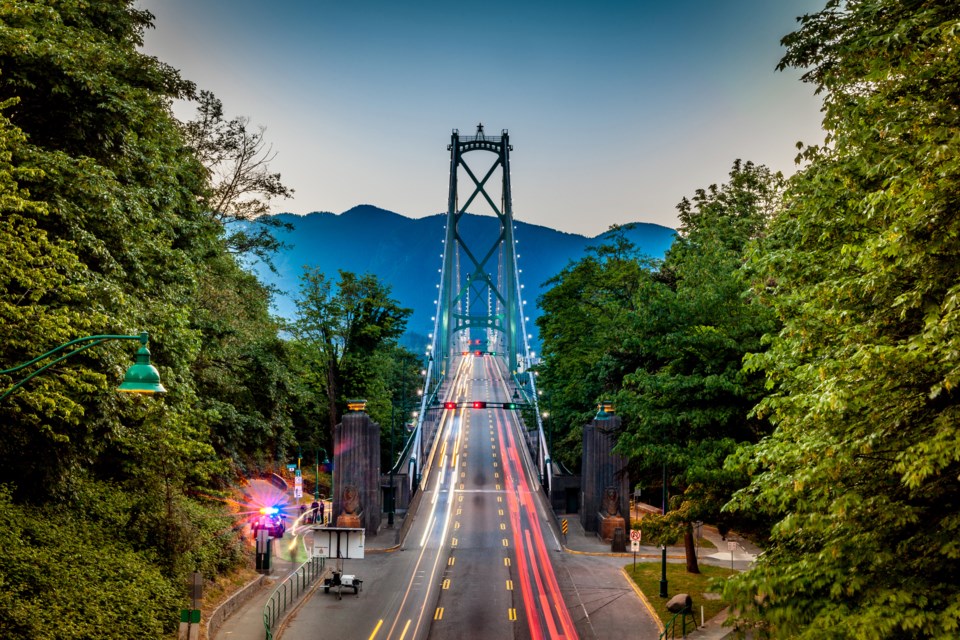Stanley Park is home to an estimated half-million trees comprised of 13 different species.
Over the last few years, the trees have had to contend with a number of threats that have caused devastation to certain areas, like the wind storm that knocked out an entire swath over a decade ago, plus pine beetles and this year's unseasonable weather. But there's another reason why a large number of trees are dead and dying around on either side of the south end of the Lions Gate Bridge causeway, in the Prospect Point area.
"Many trees in Stanley Park have been affected by a hemlock looper moth infestation," says a spokesperson for the Vancouver Parks Board. "Typically looper moth infestations run for three to four consecutive years, with Stanley Park currently in its fourth year of an outbreak."
Vancouverites might recall hearing about the outbreak and seeing evidence of it back in 2020 when a terrifying mothpocalypse took over parts of Metro Vancouver and made for an unnerving scene walking around under streetlamps at night, however by then it was already seriously underway and while the urban centres of Vancouver seem to have recovered from the infestation, remote parts with large amounts of hemlock trees have not.
"Larvae hatch in the spring and aggressively feed on foliage, with most damage occurring between July and October," explains the spokesperson. "The Hemlock looper moth feasts on coastal coniferous species—primarily western hemlocks—which makes Stanley Park, with its abundance of hemlock, particularly vulnerable."
Parts of the North Shore are also being affected with many trees showing signs of infestation. Both the City of West Vancouver and the District of North Vancouver released statements back in 2020 asking the public to report any issues they see with trees within striking distance of people's homes since "dead trees are more likely to be uprooted by wind than healthy trees."
The Vancouver Parks Board says that a significant portion of Stanley Park is affected by the outbreak and that the dead trees may eventually pose a risk to the public and infrastructure. "As Stanley Park hosts many visitors and vehicular traffic, the affected trees are being assessed to determine those that need to be removed to limit risks to public safety," says the spokesperson adding that "a fulsome plan detailing next steps and operational efforts will be communicated in due course."
The public can expect more information about this plan in the coming months though no official timeline is available at this point.




